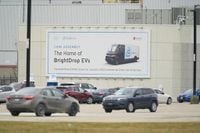Canada’s electric vehicle (EV) landscape has been thrown into the spotlight once again, as the federal government’s recent decision to pause its ambitious EV sales mandate has stirred debate across industry, advocacy groups, and everyday drivers. The move, announced by Prime Minister Mark Carney on September 5, 2025, delays the requirement that 20% of all new vehicles sold in Canada by 2026 be electric, and launches a 60-day review of the country’s overall EV program.
This pause, while seemingly bureaucratic on the surface, has unleashed a wave of commentary from key stakeholders. At the center is Kristian Aquilina, president of GM Canada, who welcomed the review and called for a shift toward policies that reflect real consumer demand rather than rigid government mandates. Speaking at a Vancouver conference just a day after the announcement, Aquilina said, “In summary, we would be pursuing a future whereby EV policy in this country is just a bit more reflective of the realities of consumer demand, rather than a forced outcome.” According to CADILLAC and The Canadian Press, Aquilina refrained from specifying what changes he hopes to see, but his message was clear: flexibility and consumer focus should guide Canada’s EV future.
Canada’s original EV mandate was designed to ramp up steadily until 2035, at which point all new light-duty vehicles sold in the country would have to be fully electric or plug-in hybrids. This target, while ambitious, was seen by many as a necessary step toward meeting climate goals. However, the government’s decision to hit pause comes amid concerns about slow consumer adoption, supply chain bottlenecks, and the impact of U.S. tariffs on Canadian steel, aluminum, and auto exports. These issues, as reported by Reuters and CBC, have complicated the North American supply chain and increased risks for automakers reliant on cross-border logistics.
Aquilina pointed to Canada’s unique advantages in the global transition to electric vehicles, highlighting the country’s rich resources and its potential role in the EV supply chain. Yet, he argued that investors and companies need the agility to adapt to market realities, rather than being pushed to move at an artificially fixed pace. “When it comes to EV adoption, it’s not going to be linear. It’s going to be a lot of noise in the system that causes adoption to be a little bit more volatile than what an idealistic straight-line adoption curve that is enforced by a mandate would suggest,” Aquilina explained, as quoted by National Post.
Not everyone is cheering the delay. Adam Thorn, director of the transportation program at the Pembina Institute, criticized the government’s move, arguing that it serves the interests of automakers at the expense of consumers. “While automakers are facing serious challenges due to U.S. tariffs, the government could have maintained the overall purpose of the regulation by adjusting existing compliance flexibilities to provide automakers some much-needed breathing room,” Thorn said in a statement. He suggested alternatives like extending credits for plug-in hybrids, supporting charging infrastructure, or modestly adjusting targets, all without undermining Canada’s long-term EV commitments.
The provincial perspective adds further nuance. B.C. Energy Minister Adrian Dix remarked that the pause primarily reflects Ontario’s circumstances and noted that British Columbia has already met the federal target. In fact, B.C.’s success has been partly attributed to its electric passenger vehicle rebate program, which ended in May 2025. Aquilina credited these rebates for the province’s high level of EV adoption but warned, “It could be a problem in the future in terms of determining the actual rate of adoption,” if such incentives disappear.
For everyday Canadians, the immediate impact of the policy shift is subtle, but worries about the future are mounting. Julien Kos, an EV driver from Back Bay, New Brunswick, shared his frustrations with unreliable public charging infrastructure. “I got there with 15 per cent and I expected to be able to just charge at the mall,” Kos recounted to The Canadian Press, only to find several chargers broken. He fears that, with the mandate paused, automakers will be less motivated to invest in EVs and the infrastructure needed to support them, potentially slowing growth in the coming years.
Tracy Miersch, EV ambassador team leader for MEET Moncton, echoed similar concerns. She told The Canadian Press that the policy shift could slow development among manufacturers not fully committed to the EV transition and might jeopardize government grants for public charging stations. However, Miersch remains optimistic that private businesses—like Tim Hortons, which recently announced plans for fast chargers at 100 locations by 2028—could help fill the gap. Angie Thomas, secretary of the board of the Electric Vehicle Association of Alberta, added, “I do worry about future charging projects coming,” warning that Canada risks falling behind in the global EV race if it doesn’t keep pace with technological advances.
From an investment standpoint, the 60-day review introduces both risk and opportunity. According to AINVEST, the pause has injected uncertainty into an already fragile market. While it eases immediate financial pressures for automakers, it also signals a government willing to adjust climate goals in response to economic realities—a potential red flag for investors betting on long-term decarbonization. The lesson, experts say, is diversification: companies that localize production or tap into alternative markets, like the EU, are better positioned to weather trade volatility. Meanwhile, adjacent sectors such as charging infrastructure and battery recycling could see growth, especially if the government reintroduces incentives or rebates to reignite demand.
Recent data suggests that EV adoption in Canada may be stalling. An AutoTrader survey from April showed that only 42% of respondents are considering an EV as their next vehicle, down from 46% last year and 68% in 2022. This trend underscores Aquilina’s point that adoption won’t be a smooth, straight line—a message that resonates with those who see consumer hesitancy and infrastructure gaps as real barriers.
Despite the turbulence, many Canadian EV drivers remain committed. Alroy Brouwer, a Barrie, Ontario resident, said the mandate pause won’t affect his decision to switch to another EV when his current vehicle reaches the end of its life. “Once people start driving an EV, they’re not going back to a gas-powered car again,” he said. Yet, he also admitted that reliable home and public charging are essential for broader adoption, a sentiment echoed by drivers across the country.
As the 60-day review unfolds, all eyes will be on Ottawa to see whether Canada can craft a policy that balances environmental ambition with economic and consumer realities. The stakes are high—not just for automakers and investors, but for the millions of Canadians navigating the road to an electric future.






